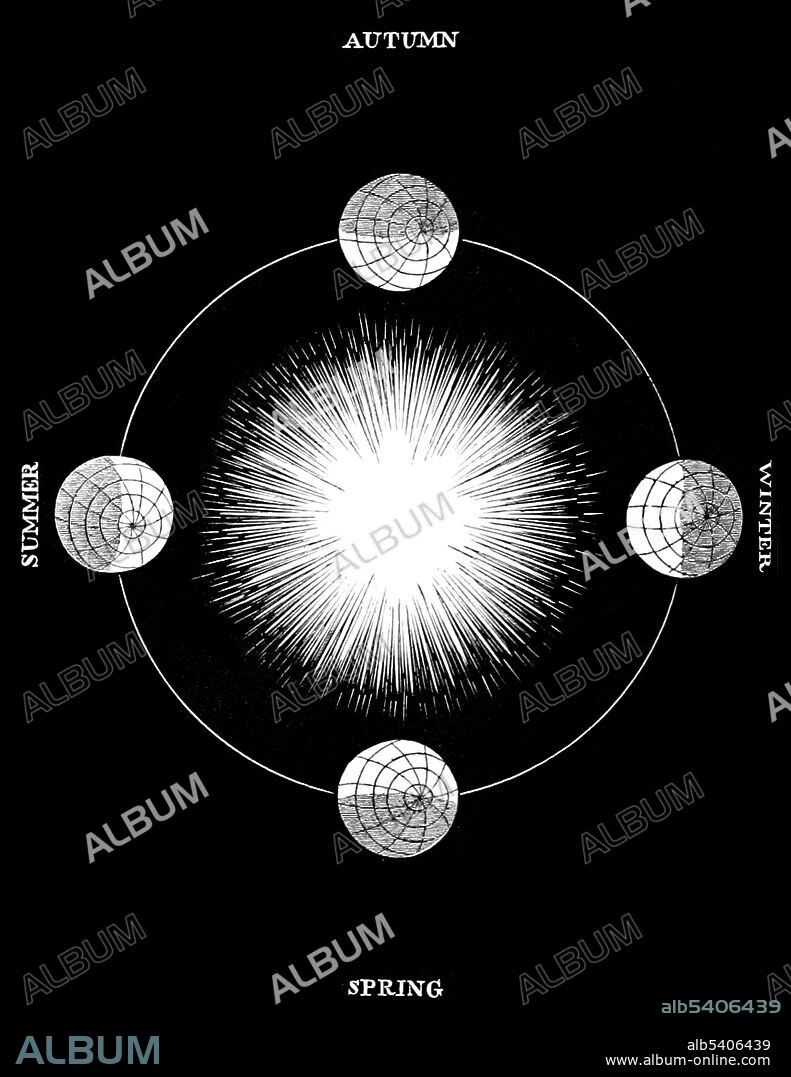alb5406439
Earth's Seasons,1844 Diagram

|
Add to another lightbox |
|
Add to another lightbox |



Title:
Earth's Seasons,1844 Diagram
Caption:
A season is a division of the year marked by changes in weather, ecology, and amount of daylight. On Earth, seasons result from Earth's orbit around the Sun and Earth's axial tilt relative to the ecliptic plane. In temperate and polar regions, the seasons are marked by changes in the intensity of sunlight that reaches the Earth's surface, variations of which may cause animals to undergo hibernation or to migrate, and plants to be dormant. Various cultures define the number and nature of seasons based on regional variations. In temperate and sub-polar regions, four calendar-based seasons are generally recognized: spring, summer, autumn or fall, and winter. Regardless of the time of year, the northern and southern hemispheres always experience opposite seasons. Image taken from page 20: Six Thousand Years Ago: or, the Works of Creation by M.C. Best, 1844.
Credit:
Album / Science Source / British Library
Releases:
Model: No - Property: No
Rights questions?
Rights questions?
Image size:
3243 x 4200 px | 39.0 MB
Print size:
27.5 x 35.6 cm | 10.8 x 14.0 in (300 dpi)
Keywords:
1844 • 19TH CENTURY • ASTRONOMY • AUTUMNAL EQUINOX • AXIAL TILT • BW • CALENDAR-BASED SEASONS • CHANGE OF SEASONS • DIAGRAM • EARTH • ECLIPTIC PLANE • HISTORY • ORBIT • ROTATING • ROTATION • ROTATIONS • SCIENCE • SEASONS • SUMMER SOLSTICE • SUN • VERNAL EQUINOX • WINTER SOLSTICE • YEAR
 Pinterest
Pinterest Twitter
Twitter Facebook
Facebook Copy link
Copy link Email
Email

